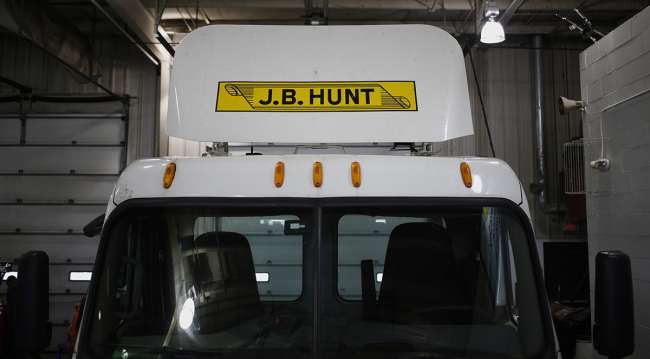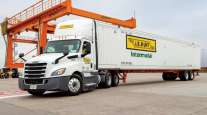J.B. Hunt Reports 6.8% Drop in 2Q Profits, Missing Analyst Forecasts

J.B. Hunt Transport Services Inc. kicked off the earnings reporting season on a sour note for the truckload industry, announcing profits dropped 6.8% year-over-year and missing the Bloomberg News consensus forecast of industry analysts.
The Lowell, Ark., carrier earned $97.9 million in profits for the second quarter, or 88 cents per share. One year ago, J.B. Hunt netted $105 million or 92 cents.
On a positive note, revenue grew 6.9% to $1.73 billion.
The Bloomberg News consensus forecast called for $102.9 million in profits or 92 cents and $1.74 billion in revenue.
“While the miss was not all that surprising, the components were a bit, as intermodal beat and posted growth, while dedicated contract services, Integrated Capacity Solutions [freight brokerage operating unit] and [truckload] were all down,” Citi Research analyst Christian Wetherbee noted.
Revenue at Dedicated Contract Services, providing dedicated contract carriage service, rose 8% to $412 million, but operating income — the amount after removing expenses — dropped 4% to $48.6 million. J.B. Hunt reported that productivity, excluding fuel surcharges, was flat over a year ago, even though total loads increased 4.7% to 636,149. Operating income dropped “primarily from increases in driver wages, increased accident frequency driving higher insurance and claims costs and higher start-up expenses for new customer contracts compared to the second quarter 2016,” the carrier wrote in its earnings release.
At the Integrated Capacity Solutions freight brokerage unit, revenue rose 9% year-over-year to $222 million but ended the quarter with a $239,000 operating loss, down 102%. Freight brokerage volumes rose 20% to 240,069, but revenue per load fell 9% to $927. J.B. Hunt blamed the operating loss on margins compressing from 15% to 11.6%, more sales offices than a year ago and higher technology development costs.
J.B. Hunt’s dry-van truckload unit fared the worst with revenue down 4% to $95 million and operating income declining 37% to $5.6 million. Contract rates fell 0.4%, making it harder to increase driver pay. But J.B. Hunt told investors that it did increase pay for company drivers, eating into the operating income. Loads were flat year-over-year at 96,897, but total miles fell 5.9% to 49.9 million.
The one bright spot was J.B. Hunt’s biggest operating unit: intermodal. Revenue rose 7% to $1 billion and operating income increased 4% to $109.7 million. Transcontinental loads grew 10% while eastern U.S. network volumes were down 2% compared with a year ago. Revenue per load was up 1.9% and loads were up 5.2% to 501,038.
However, even the growth in the intermodal unit was muted by a revised guidance from management for the second half of 2017, slashing revenue per load estimates down to $1000 per load from $2000 in the first half of this year.
Management also cut guidance on operating margins to 1% to 3% in the brokerage unit and 5% to 6% in the trucking unit, putting both with operating ratios in the mid-to-upper 90s.
Halfway through 2017, the company’s overall performance tells a similar story. Revenue grew 6.7% to $3.36 billion, but profits were down 2.2% to $200.6 million, or $1.80. Higher pay and higher insurance and rent and purchased transportation costs dragged down profits in the first half of the year versus 2016 levels. Wage expenses rose 4.9% to $770.2 million, rent and purchased transportation increased 9.3% to $1.68 billion and insurance costs surged 38% to $50.5 million versus a year ago.
Bloomberg News forecasts called for revenue of $3.36 billion and $205.6 million in profits or $1.82 in the first six months of the year.
J.B. Hunt ranks No. 4 on the Transport Topics Top 100 list of the largest North American for-hire carriers.




